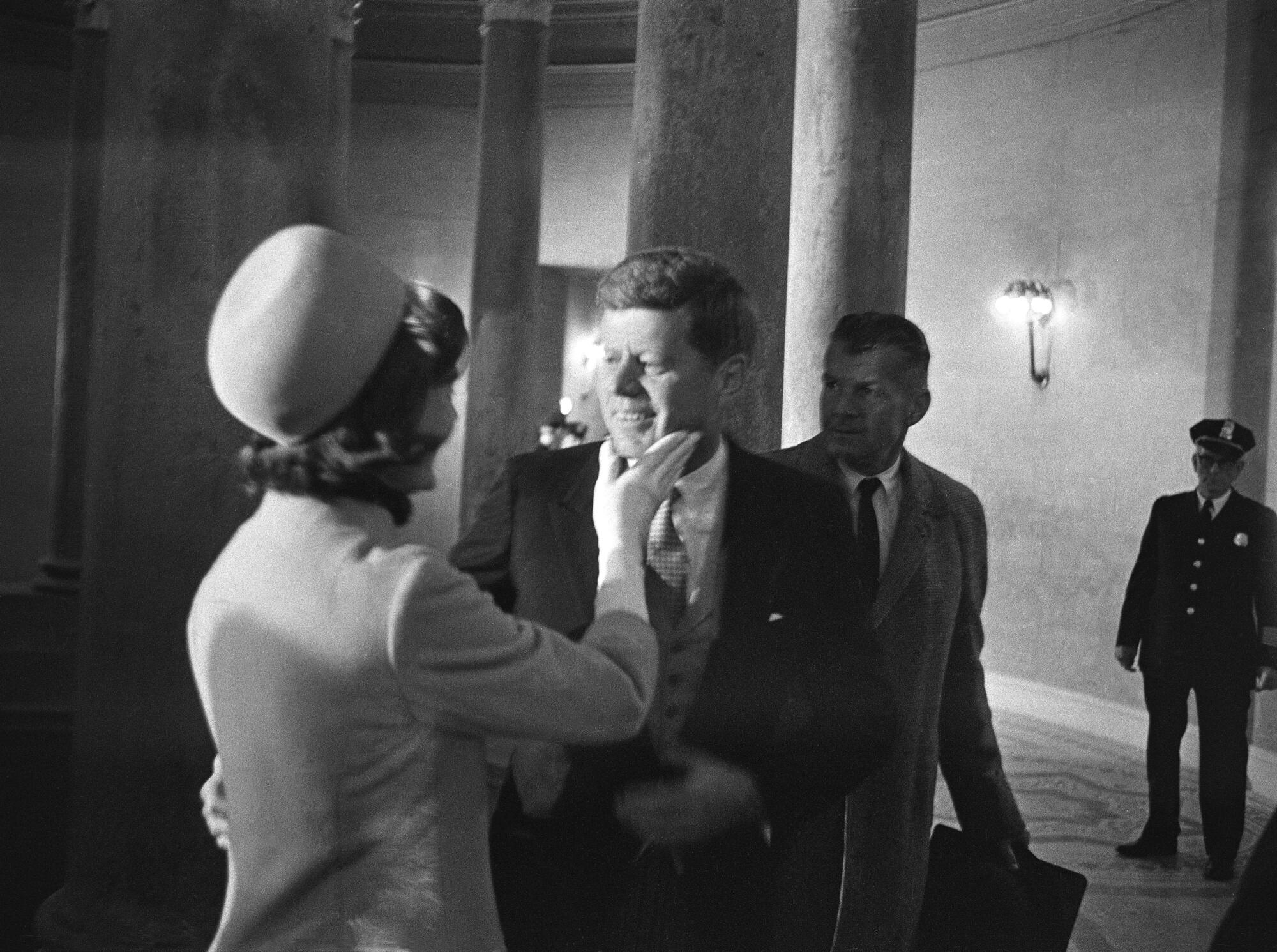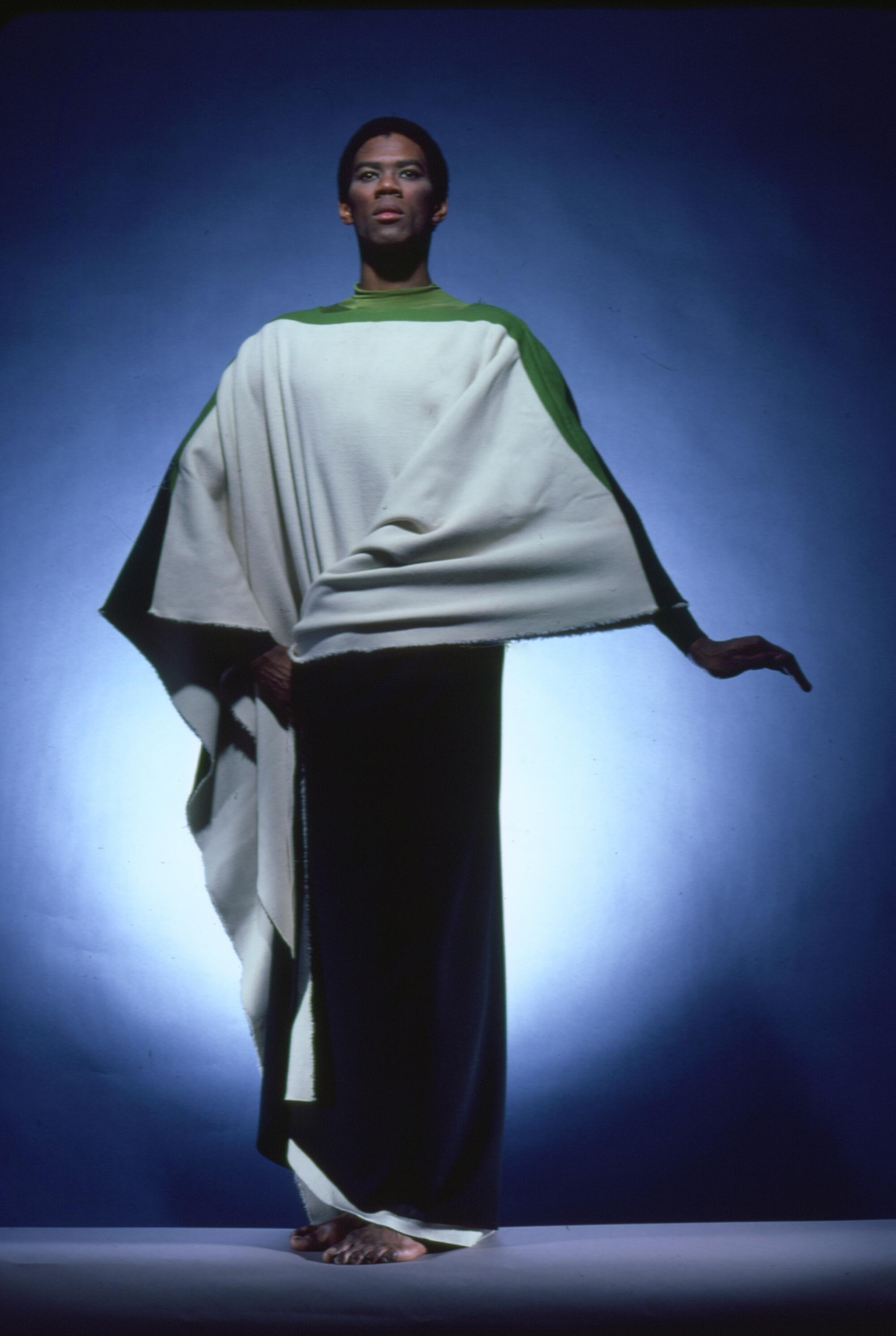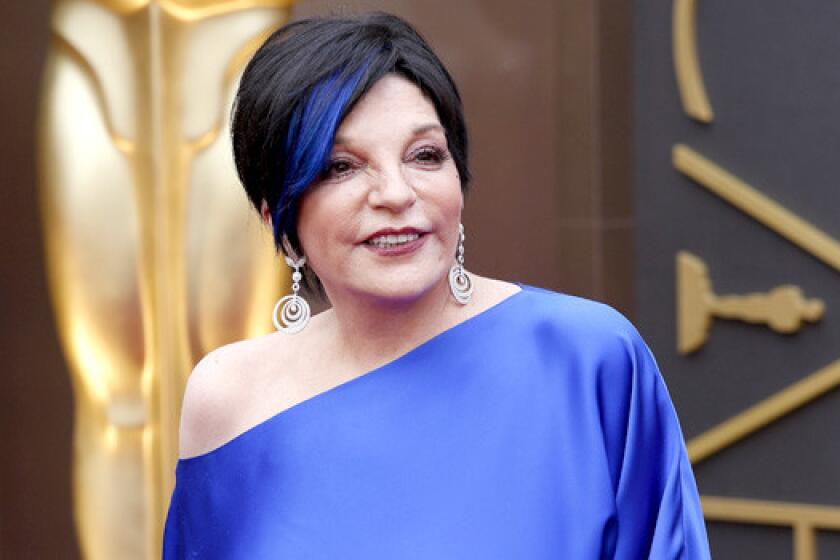- Share via
Halston, the mononymous American fashion designer whose stripped-back, body-freeing take on luxury — caftans, halter dresses and acres of Ultrasuede — was a defining look of the ’70s, continues to fascinate.
Maybe that’s because his career, now more than three decades in the rearview mirror, still feels so contemporary, both in terms of his aesthetic — riffs on his shirtdress are everywhere and when haven’t caftans been a thing? — and his business strategy — including the once-novel concepts of brand extensions and diffusion lines. Or maybe it’s because the dramatic arc of his career from anonymity to high-flying celebrity designer to scandal-page fodder makes him seem like a victim of Me Decade cancel culture. Whatever the reason, Halston’s life seems to be perennially ripe for exploration in books (including Steven Gaines’ “Simply Halston”) and documentaries (most recently in 2010 and again in 2019). And, now, a five-part miniseries.
“Halston,” premiering Friday on Netflix, is a passion project 20-some years in the making for executive producer and director Dan Minahan, whose fascination with the New York scene inhabited by Andy Warhol, Liza Minnelli, Halston and Victor Hugo came from reading Interview magazine and After Dark magazine as a gay kid in the suburbs of Connecticut. The genesis for “Halston” would take shape years later, in his 20s, after reading Gaines’ Vanity Fair article that later developed into “Simply Halston.”
“I read it and I was so struck by it that I started reading other things about Halston and this world,” Minahan said. “The hook for me was this idea of someone coming to New York, creating this made-up name, building it into an empire and then being stripped of his name and company — he couldn’t be Halston anymore. And to me that was very rich. It seemed like a really archetypal American story.”
Initially conceived as a feature film, with some false starts along the way, it evolved into a limited series at the suggestion of Minahan’s producing partner on the project, Christine Vachon of Killer Films. Turning it into a five-part series allowed the narrative to stretch over multiple periods of Halston’s life, Minahan said.
“My idea was to structure it around all the different collections or creations of Halston,” Minahan said. “So each episode is, like, the first collection, or it’s the creation of the fragrance, or it’s the Battle of Versailles, or the J.C. Penney collection, to give us an opportunity to show his creative process and his creative genius and then all of the maelstrom of the drama around him.”
One upside of that structure is that many of the designer’s defining creations — most of them painstakingly reconstructed by costume designer Jeriana San Juan, with a scant few borrowed from the archives of the Halston label’s current owner or private collections — get ample screen time over the series’ arc. Here’s what you’ll see — and how it helped shape the brand, and the life, of the man portrayed in the Netflix miniseries by Ewan McGregor.
Halston, the celebrity fashion designer whose creations included gowns for Liza Minnelli and pillbox hats for Jacqueline Kennedy, died Monday night at Pacific Medical Center of AIDS-related lung cancer.
The first lady’s pillbox hat

Halston’s meteoric rise — like the series’ first episode — began in 1961 with a stroke of luck: Jacqueline Kennedy accessorized her Inauguration Day Oleg Cassini suit with a pillbox hat custom-designed by Bergdorf Goodman milliner Roy Halston Frowick. The hat not only gave the designer’s handiwork international exposure, boosted business at Bergdorf’s and became a sartorial signature for the incoming first lady, but it also spawned a copycat boom. In an interview later in his career, Halston said that a dent in the hat was the result of Mrs. Kennedy’s efforts to hold on to the hat on a windy day, noting that “everybody who copied it put a dent in it, which was so funny.”
The Ultrasuede shirtdress
Halston didn’t invent the lightweight polyester/polyurethane blend fabric with a suede-like feel, but he had a hand in popularizing it in the early 1970s. (It was so intertwined with Halston that a 2010 documentary about him was titled “Ultrasuede.” Not bad for a happy accident; Halston first found out about the fabric at a 1971 cocktail party in Paris when designer Issey Miyake, who was wearing an Ultrasuede shirt at the time, told him the material was “washable” — which Halston misunderstood as “water repellent.” After a failed attempt to use it for raincoats (an effort referenced in the miniseries), he used Ultrasuede for a stylish take on the trench coat, which turned out to be a hit. He would go on to use the fabric in a range of accessories, including footwear and handbags.
Partly reflecting the designer’s personal style, the shirtdress — a slightly feminized riff on the men’s button-front dress shirt with a matching fabric belt — was introduced in the fall of 1972. The knee-length Ultrasuede garment known as model No. 704 lighted the fashion world on fire and became as synonymous with Halston as the fabric it was made out of. Like the pillbox hat that launched him into the fashion design stratosphere, it would be widely copied by other designers.
The Halston fragrance bottle
The bottle itself may have been designed by Elsa Peretti (portrayed in the series by Rebecca Dayan, who started her own very successful career designing jewelry pieces that appeared in his runway shows), but it marked Halston’s first major brand extension. His insistence on the design — in conflict with the brand’s owner, Norton Simon Inc. — is recounted in the series’ third episode and serves as a harbinger of things to come. Minahan said there was a purpose behind focusing on the perfume packaging.
”The creation of the bottle in the third hour, that’s very interesting,” he said. “Because I do think it shows a story about creative process, or [how] we use creative process to tell the big story. So we get to see his genius, we get to see him making things and why he is who he is and then all the crazy people around him. You get to see her [Elsa Peretti] find the shell on the beach and then you get to see it become this bottle. And we really went to a glass foundry and worked with glassblowers to re-create the bottle.”
Liza Minnelli
Halston had many patrons and celebrity champions over the course of his career — Babe Paley, Elizabeth Taylor, Bianca Jagger and Anjelica Huston among them — but none was as consistent or as close as Liza Minnelli (played in the Netflix series by Krysta Rodriguez). Although Minnelli wore the designer extensively for decades, her support for her friend was on full display during some of the most important moments of her life, including at the 1973 Academy Awards when she took home the lead actress award (for “Cabaret”) in a gold Halston ensemble, and, as recounted in the series, the designer created a custom butter-yellow pantsuit for her 1974 wedding to Jack Haley Jr.
The Sunday Conversation: Liza Minnelli is taking her new stage show, ‘Simply Liza,’ on the road, including her Disney Hall debut. She dishes the new show, her love of Broadway, being a fan of Lady Gaga and that Oscar dig.
The halter dress
Another ‘70s look popularized by Halston was the halter dress. Fastening at the waist and around the neck, the backless, often-draped style afforded freedom of movement — which helped entrench it on the dance floors of the disco era, most notably Studio 54. What the nightclubs didn’t do to sear the style into our collective memories, Liza Minnelli did — choosing a red, sequined micro-mini halter dress by Halston for the 1972 Bob Fosse “Liza With a ‘Z’” concert film.
Caftans
There are a lot of free-floating fabrics to be had across the five episodes of Netflix’s miniseries, a nod to the billowy caftans that were part of the designer’s oeuvre. The first episode re-creates the eureka moment with a royal-blue tie-dye caftan worn by Dayan’s Elsa Peretti in a fashion show.
Halston’s personal style
The uniform Ewan McGregor’s Halston wears throughout much of the series — black cashmere turtleneck, slacks, an assortment of mostly black (and occasionally white) jackets and sport coats, with dark sunglasses firmly in place — wasn’t just part of his personal branding (though it was definitely that). It was also an aesthetic that reflected the simple, stripped-back luxe of the clothes he designed. It was also, apparently, a savvy business decision, according to The Times’ 1990 obituary for the designer, which included this quote: “It’s traditional in fashion that the vendeur wears black so as not to compete with the client or the clothes.”
Halston III at J.C. Penney
If there was a single downward turning point in the public-facing fortunes of the Halston brand, it would be the deal with J.C. Penney. After the more accessible (read, much less expensive) Halston III line was picked up by the department store chain in 1983, high-end retailers dropped his main line. The most notable of these was Bergdorf Goodman — his first retail champion.
Costumes for Martha Graham’s ‘Rite of Spring’

The designer’s public life — and the miniseries — come to a close with the costumes he designed for the production of “Rite of Spring” by longtime friend and supporter Martha Graham. Although far less known than his career-making looks, the draped costumes bore many of the hallmarks of his style. The show debuted in February 1984. By the fall of that year, Halston would officially be gone from the label that bore his name.
“In a story that’s so much about him and the singularity of him, in the end he ends up being an artist again,” Minahan said. “He starts off by saying he wants to be like Balenciaga or a couturier, he wants to be an artist. And then he goes through every possible machination of creativity, all the way to mass market — and loses everything — and then at the end becomes an artist again. So that was important to me, and I think it ends it on the right note. He’s a tragic hero, but I think he has a dignity in the way we end the story.”
Roy Halston Frowick would live for another six years. He died in a San Francisco hospital in 1990 after an 18-month battle with AIDS. He was 57.
More to Read
The complete guide to home viewing
Get Screen Gab for everything about the TV shows and streaming movies everyone’s talking about.
You may occasionally receive promotional content from the Los Angeles Times.









